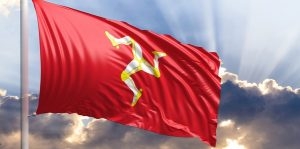National Day of the Isle of Man: Laa Tinvaal Sonney Diu – Happy Tynwald Day!

Tynwald Day (Manx: Laa Tinvaal), the National Day of the Isle of Man (Mannin) is held on the 5th of July. It is traditionally when the government for the Isle of Man go to Tynwald Hill to read a summary of the laws passed over the last year. Although the Tynwald fair and ceremony is this year taking place tomorrow and has been scaled down due to the coronavirus pandemic. The reading is given in Manx Gaelic and English. The artificial hill, which is thought to have started as a Bronze Age burial mound, is made up of four circular platforms. It is said to have been a meeting place for the Celtic midsummer assembly. Hence there is a large Celtic Cross on the site representing the Celtic god, Lugh. This past is still remembered by the laying of the rushes on the Processional Walkway to the hill in homage to the Celtic sea God Mannanan.
Tynwald is the parliament of the Isle of Man, it is of Norse origin and over 1,000 years old. It is the oldest parliament in the world with an unbroken existence. The Norse governed the island for over four hundred years from 800 AD to 1265 AD. In 1079, Godred Crovan, the Norse-Gaelic ruler, invaded the Isle of Man and held power for 16 years. It is believed that under his rule the Tynwald Parliament was established. The name Tynwald is derived from the Old Norse word Þingvǫllr, meaning the field of the thing.
Thing associated sites and place names are located in Norway (Tingvoll), Sweden, Iceland (Þingvellir) and in the Faroe Islands (Tinganes). Then further south more such meeting places are found. This reflects the strong Norse influences that were spread by the Vikings through the northern and western islands of Scotland, parts of the Scottish mainland, then into the Irish Sea to the Isle of Man and Ireland from the 8th - 15th centuries. So as well as Tynwald on the Isle of Man other Thing sites include Tingwall in Orkney, Tingaholm in Shetland, Dingwall in the Highlands of Scotland, Tinwald in Dumfries and Galloway in south-west Scotland and in Dublin there also used to be a site known as Thingmote that was used for the same purpose.






